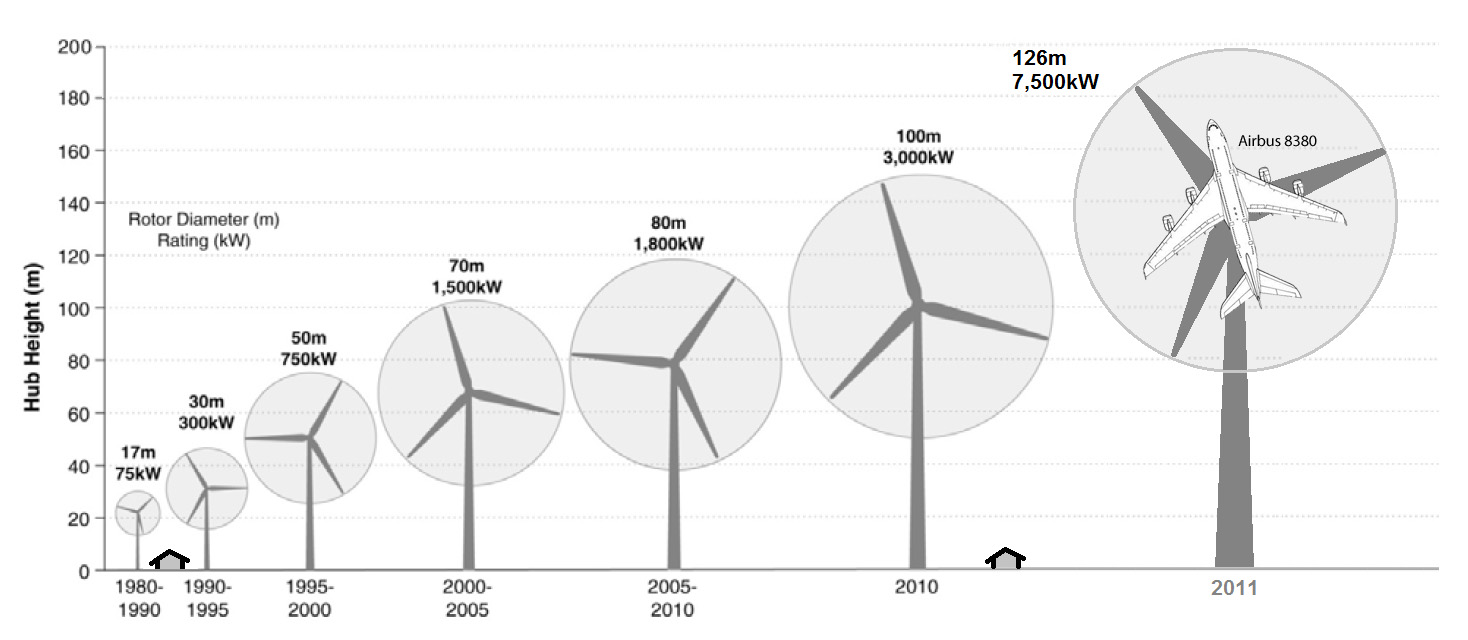From the outside, wind turbines look much the same as they did 10 years ago, if a bit larger. But like other forms of technology such as cellphones and computers, wind turbine technology has improved rapidly in recent years especially in the area of power control electronics.
Technological improvements have also substantially reduced the cost of wind energy. At a given site, a single modern wind turbine annually produces roughly 180 times more electricity per year and at less than half the cost per kilowatt-hour (or "unit" of electricity) than its equivalent of 20 years ago.
Lawrence Berkeley National Laboratory in their most recent report on wind power confirm the attractiveness of wind energy with improvements in technology and reducing cost.
Increase in Size

If you have ever flown a kite you know that the higher you go, the windier it gets. So wind turbine towers are getting taller. Towers can now be up to 100 meters, or nearly 30 stories high from base to nacelle. The blade span of these enormous turbines are bigger than the Airbus 380 - the world's biggest passenger airplane.
As towers get taller, turbine blades get longer, which helps catch more wind. By turning to lighter, stronger materials, such as carbon fiber or advanced fabrics (the same composite materials used for next-generation aircraft), turbines can spin and generate power at lower speeds. For example, by stepping up to a diameter of 120 metres, from 103 metres, a new turbine could deliver up to a 15 percent increase in output.
As of 2017 the world’s most powerful turbine is rated at 9.5MW and has a rotor diameter of 164 metres.
Getting smarter
Today's turbines have sensors and precision controllers, which constantly tweak the blade position to optimize the use of the wind energy and provide information to wind farm operators. The orientation of each turbine blade is continuously adjusted as well. Intelligent controllers expose more of the blade to capture the most wind. If gusts grow dangerously strong, the blades can also be rotated to minimize their exposure and the risk of damage.
Improvements in weather forecasting are also increasing the output from wind farms. Accurate wind forecasts can increase the power dispatch by 10 percent (meaning that more energy can be sold and fed into the grid) by having a better grip on the wind's intermittent nature.
Modern turbines can also provide “ancillary services” such as reactive power and frequency keeping services. These functions help to stabilise the grid or local network a wind farm is connected into, effectively ensuring the lights stay on.
